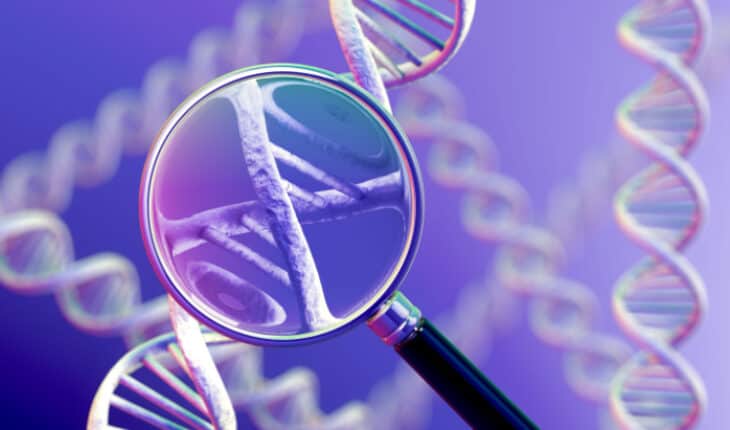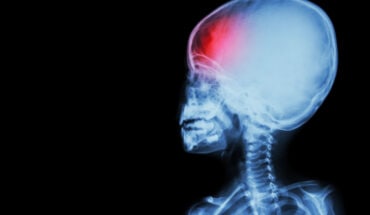80-year-old medical mystery that caused baby deaths solved: Researchers at the University of East Anglia have solved an 80-year-old medical mystery that causes kidney damage in children and can be fatal in babies.
Those affected by the condition cannot metabolise vitamin D properly, causing a build-up of calcium in the blood and leading to kidney damage and kidney stones.
It led to a wave of baby deaths in the 1930s and 1940s, after foods such as milk, bread, cereal, and margarine were fortified with Vitamin D in a bid to eradicate rickets in children.
Recent research had shown that the condition, now known as infantile hypercalcaemia type 1, is caused by a gene mutation. But curiously, around 10 per cent of patients experiencing symptoms do not have the genetic mutation.
“This really puzzled us,” said lead researcher Dr Darrell Green, from UEA‘s Norwich Medical School. “So we wanted to find out exactly why this 10 per cent appeared to have the condition, but without the gene mutation that was found to cause it.”
The puzzle began in the early 1900s, when more than 80 per cent of children in industrialised Europe and North America were affected by rickets, which causes bone pain, poor growth and soft, weak, deformed bones.
The discovery that sunlight prevented rickets led to fortification of foods with vitamin D, which all but eradicated the disease by the 1930s. But outbreaks of vitamin D intoxication in infants led to fortification bans in many European countries by the 1950s.
Dr Green said: “Foods such as dairy products had been fortified with vitamin D, but it led to a number of baby deaths, and was eventually banned in many countries except for in breakfast cereals and margarine.
“In 2011, researchers found that some people are born with a mutation in the CYP24A1 gene, which means they cannot metabolise vitamin D properly. This causes a build-up of calcium in the blood, leading to kidney stones and kidney damage, which can be fatal in babies. It was the reason why vitamin D-fortified food in the 1930s caused intoxication in some people.
“Today, some people do not realise they have a CYP24A1 mutation until they are adults, after years of recurrent kidney stones and other problems. In most cases, these patients are screened and find out that they have the CYP24A1 mutation and the disorder now known as infantile hypercalcemia type 1, or HCINF1.
“However, in around 10 per cent of suspected HCINF1 patients, they do not display an obvious mutation in CYP24A1 and continue to have lifelong problems without a proper diagnosis.”
The UEA team collaborated with colleagues at the Norfolk and Norwich University Hospital, where they worked with 47 patients.
They used a combination of next generation genetic sequencing and computational modelling to study blood samples from those ’10 per cent’ of puzzling patients.
Dr Green said: “A PhD student in my laboratory, Nicole Ball, carried out a more extensive genetic analysis of six patient blood samples and we found that the physical shape of the CYP24A1 gene in these apparent HCINF1 patients is abnormal.
“This tells us that gene shape is important in gene regulation – and that this is the reason why some people lived with HCINF1 but without a definitive diagnosis”, he added.
“On a wider scale relevant to genetics and health, we know that genes must have the correct sequence to produce the correct protein, but in an added layer of complexity, we now know that genes also have to have a correct physical shape,” added Dr Green.
Prof Bill Fraser, from both Norwich Medical School and the Norfolk and Norwich University Hospital, co-led the study and treats HCINF1 patients in metabolic bone clinics.
He said: “Genetic causes of vitamin D toxicity can be left undiagnosed for long periods, well into adulthood, sometimes coming to light during pregnancy when fortification of mothers with vitamin D happens. We also see patients with undiagnosed causes of recurrent renal stones who have had this condition for many years.
“Treatment includes avoidance of vitamin D supplementation in subjects with the particular genetic abnormalities we have identified.
“A beneficial side effect to some anti-fungal medications includes alteration of vitamin D metabolism lowering active vitamin D, which decreases calcium levels and can give patients a more normal quality of life, which we have started to prescribe in some patients,” he added.
The researchers now plan to investigate the role of gene shapes in other disorders such as cancer.
This research was led by UEA in collaboration with the John Innes Centre, the Norfolk and Norwich University Hospital, Croydon University Hospital, and the Royal Hospital for Children in Glasgow.
‘3’ untranslated region structural elements in CYP24A1 are associated with Infantile hypercalcaemia type 1′ is published in the Journal of Bone and Mineral Research,
CASE STUDY – Shelley O’Connor
Shelley O’Connor, 34, from Norwich, was diagnosed with infantile hypercalcaemia type 1 eleven years ago when she fell pregnant with her first child at the age of 23.
She had started to take pregnancy supplements, which included vitamin D. But she began to experience a pain so severe that midwives thought she was going into an early labour at just 23 weeks.
“It was very frightening,” she said. “I was in a lot of pain, and the midwives thought I was going into labour. I was really scared for the baby, but when I had an MRI, they found out that it was actually a kidney stone caused by taking vitamin D as a pregnancy supplement.”
Thankfully, her son was born safe and well at full term, and Shelley has since gone on to have another two children.
“I was diagnosed with HCINF1 and it did explain a lot because I had experienced things like abdominal pain and UTIs in childhood,” she said.
But the condition has taken its toll. Shelley now regularly passes kidney stones and needs to take pain medication. She also has to have an operation every six months to clear the calcium build-ups that lead to kidney stones.
“I was really pleased to be invited to take part in the research, and I hope the findings go on to help others like me,” she said.
A copy of the paper can be accessed here.
- Gut microbiome could delay onset of type 1 diabetes - 3rd April 2025
- The da Vinci 5 Robot Is Set To Transform Bariatric Care: - 31st March 2025
- Beyond money: the hidden drivers fuelling child food insecurity - 31st March 2025






